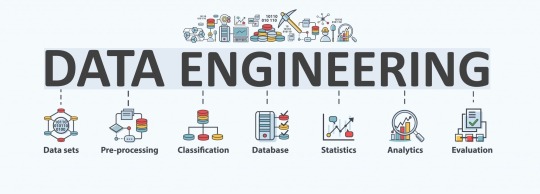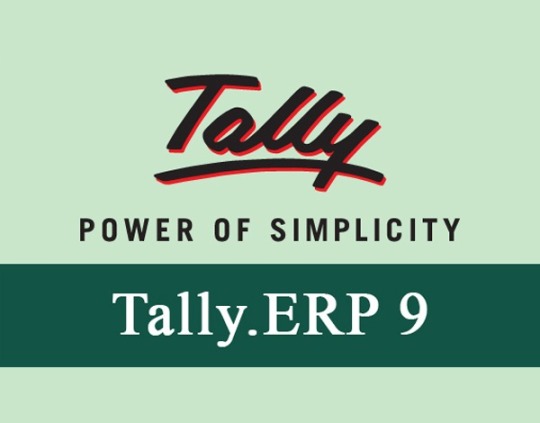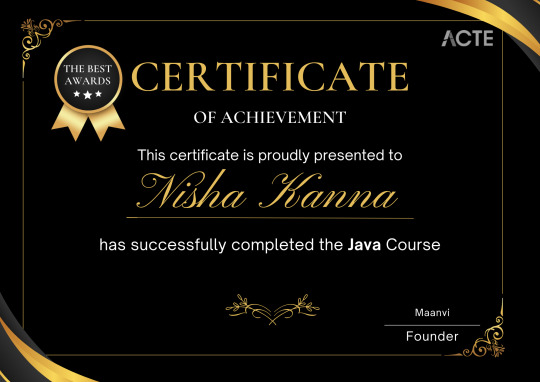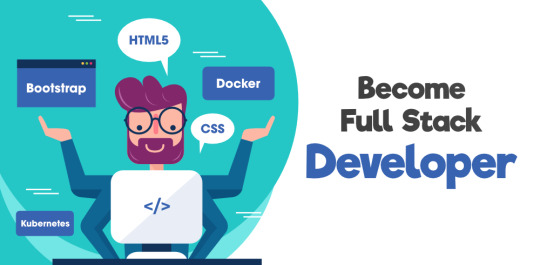#best java web server
Explore tagged Tumblr posts
Text

Improve Your Java Projects with Hosting Home's Java VPS Servers
With Hosting Home’s Java VPS servers, your Java applications get the speed and reliability they deserve. Enjoy top-tier performance, robust security, and expert support tailored for your success.
#java vps#vps java hosting#java hosting vps#vps hosting java#vps java#best vps hosting for java#best java servers#best java web server#tomcat server in java#java server
2 notes
·
View notes
Text

Ubuntu is a popular open-source operating system based on the Linux kernel. It's known for its user-friendliness, stability, and security, making it a great choice for both beginners and experienced users. Ubuntu can be used for a variety of purposes, including:
Key Features and Uses of Ubuntu:
Desktop Environment: Ubuntu offers a modern, intuitive desktop environment that is easy to navigate. It comes with a set of pre-installed applications for everyday tasks like web browsing, email, and office productivity.
Development: Ubuntu is widely used by developers due to its robust development tools, package management system, and support for programming languages like Python, Java, and C++.
Servers: Ubuntu Server is a popular choice for hosting websites, databases, and other server applications. It's known for its performance, security, and ease of use.
Cloud Computing: Ubuntu is a preferred operating system for cloud environments, supporting platforms like OpenStack and Kubernetes for managing cloud infrastructure.
Education: Ubuntu is used in educational institutions for teaching computer science and IT courses. It's free and has a vast repository of educational software.
Customization: Users can customize their Ubuntu installation to fit their specific needs, with a variety of desktop environments, themes, and software available.
Installing Ubuntu on Windows:
The image you shared shows that you are installing Ubuntu using the Windows Subsystem for Linux (WSL). This allows you to run Ubuntu natively on your Windows machine, giving you the best of both worlds.
Benefits of Ubuntu:
Free and Open-Source: Ubuntu is free to use and open-source, meaning anyone can contribute to its development.
Regular Updates: Ubuntu receives regular updates to ensure security and performance.
Large Community: Ubuntu has a large, active community that provides support and contributes to its development.
4 notes
·
View notes
Text
Best IT Courses In Bhubaneswar:- seeree services pvt ltd.
Introduction:- seeree is one of the best IT training institute and Software industry, features completely Industrial training on Python , PHP , .NET , C Programming,Java , IOT , AI , GD PI , ORACLE and ALL CERTIFICATION COURSES as well as provides seminar,cultural activity and jobs
Courses we provided:- 1) Java Fullstack 2) Python Fullstack 3) PHP Fullstack 4) Preplacement Training & Sp. Eng 5) .NET Fulstack 6) SEO/Digital Marketing 7) SAP 8) MERN 9) Software Testing 10)Data Analyst 11)Data Science 12)Data Engineering 13)PGDCA 14)Tally 15)Graphics Design
Course1:- Java Fullstack

A Class in Java is where we teach objects how to behave. Education at seeree means way to success. The way of teaching by corporate trainers will bloom your career. We have the best java training classes in Bhubaneswar. 100% Placement Support. Job Support Post Training. This course will give you a firm foundation in Java, commonly used programming language. Java technology is wide used currently. Java is a programming language and it is a platform. Hardware or software environment in which a program runs, known as a platform. Since Java has its own Runtime Environment (JRE) and API, it is called platform. Java programming language is designed to meet the challenges of application development in the context of heterogeneous, network-wide distributed environment. Java is an object-oriented programming (OOP) language that uses many common elements from other OOP languages, such as C++. Java is a complete platform for software development. Java is suitable for enterprise large scale applications.]
Course2:- Python Fullstack

Seeree offers best python course in Bhubaneswar with 100% job assurance and low fee. Learn from real time corporate trainers and experienced faculties. Groom your personality with our faculty. Seeree helps to build confidence in students to give exposure to their skills to the company.
Python is dynamically typed , compiled and interpreted , procedural and object oriented , generalized , general-purpose , platform independent programming language. Python is a high-level, structured, open-source programming language that can be used for a wide variety of programming tasks.
Course3:- PHP Fullstack

seeree is the best training institute which provide PHP Training courses in bhubaneswar and all over odisha We aim the students to learn and grow altogether with the need of IT firms.
PHP is a server scripting language, and a powerful tool for making dynamic and interactive Web pages. PHP is a widely-used, free, and efficient alternative to competitors such as Microsoft's ASP.
Course4:- Preplacement Training & Sp. Eng

Welcome to SEEREE Institute, where excellence meets opportunity. At SEEREE, we are dedicated to providing a transformative learning experience that empowers students to achieve their goals and contribute to a brighter future.
Our institute offers cutting-edge courses designed to meet the needs of the ever-evolving global landscape. With a team of highly qualified instructors and state-of-the-art facilities, we ensure a supportive and inspiring environment for learning and growth.
Whether you're here to develop new skills, explore innovative fields, or pursue personal and professional success, SEEREE Institute is the perfect place to begin your journey. Thank you for choosing us, and we look forward to being a part of your success story.
Course5:- .NET Fullstack

Seeree offers best .NET course in Bhubaneswar with 100% job assurance and low fee. Learn from real time corporate trainers and experienced faculties. Groom your personality with our faculty. Seeree helps to build confidence in students to give exposure to their skills to the company.
Course6:- SEO/Digital Marketing

In today's fast-paced digital world, businesses thrive on visibility, engagement, and strategic online presence. At SEEREE, we empower you with the skills and knowledge to master the art of Search Engine Optimization (SEO) and Digital Marketing.
Our comprehensive program is designed for beginners and professionals alike, covering everything from keyword research, on-page and off-page SEO, and content marketing, to social media strategies, PPC campaigns, and analytics.
With hands-on training, real-world projects, and guidance from industry experts, we ensure you're equipped to drive measurable results and excel in this dynamic field.
Join us at SEEREE Institute and take the first step towards becoming a leader in the digital marketing landscape!"
Course7:- SAP

SAP refers to Systems, Applications, and Products in Data Processing. Some of the most common subjects covered in these courses include human resource software administration, database management, and business training. Obtaining SAP certification can be done on a stand-alone basis or as part of a degree program.
Course8:- MERN

Seeree offers the best MERN course in Bhubaneswar with 100% job assurance and low fees. Learn from real-time corporate trainers and experienced faculty. Seeree helps students build confidence and gain skills to excel in company roles.
Are you ready to step into the exciting world of web development? At SEEREE, we bring you a comprehensive MERN Stack course that equips you with the skills to build modern, dynamic, and responsive web applications from start to finish.
The MERN Stack—comprising MongoDB, Express.js, React.js, and Node.js—is one of the most sought-after technologies in the web development industry. Our program is designed to help you master each component of the stack, from creating robust backends and managing databases to crafting dynamic frontends and seamless APIs.
Course9:- Software Testing

Seeree offers best Testing course in Bhubaneswar with 100% job assurance and low fee. Learn from real time corporate trainers and experienced faculties. Groom your personality with our faculty. Seeree helps to build confidence in students to give exposure to their skills to the company.
In the fast-paced world of software development, ensuring the quality and reliability of applications is crucial. At SEEREE, we offer a comprehensive Software Testing course designed to equip you with the skills and techniques needed to excel in this essential field.
Our program covers all aspects of software testing, from manual testing fundamentals to advanced automation tools and frameworks like Selenium, JIRA, and TestNG. You’ll learn to identify bugs, write test cases, execute test scripts, and ensure software meets high-quality standards.
With hands-on training, real-world scenarios, and guidance from experienced industry professionals, you’ll be prepared to take on roles like Quality Assurance Engineer, Test Analyst, and Automation Tester.
Join SEEREE Institute and gain the expertise to become a key player in delivering flawless software solutions. Your journey to a rewarding career in software testing starts here!"
Course10:- Data Analyst

Seeree offers the best Data Analyst course in Bhubaneswar with 100% job assurance and affordable fees. Our comprehensive curriculum is designed to cover all aspects of data analysis, from data collection and cleaning to advanced data visualization techniques. Learn from real-time corporate trainers and experienced faculty members who bring industry insights into the classroom. Enhance your analytical skills and boost your career prospects with hands-on projects and real-world case studies. Our faculty also focuses on grooming your personality and soft skills, ensuring you are well-prepared for interviews and workplace environments. Seeree is dedicated to building confidence in students, providing them with the necessary exposure to showcase their skills to top companies in the industry.
Course11:- Data Science

Seeree offers the best Data Science course in Bhubaneswar with 100% job assurance and affordable fees. Our comprehensive curriculum is designed to cover all aspects of data science, from data collection and cleaning to advanced data visualization techniques. Learn from real-time corporate trainers and experienced faculty members who bring industry insights into the classroom. Enhance your analytical skills and boost your career prospects with hands-on projects and real-world case studies. Our faculty also focuses on grooming your personality and soft skills, ensuring you are well-prepared for interviews and workplace environments. Seeree is dedicated to building confidence in students, providing them with the necessary exposure to showcase their skills to top companies in the industry.
Course12:- Data Engineering

In the era of big data, the ability to design, build, and manage scalable data infrastructure is one of the most in-demand skills in the tech industry. At SEEREE, we are proud to offer a comprehensive Data Engineering course that prepares you for a career at the forefront of data-driven innovation.
Our program covers essential topics such as data modeling, ETL processes, data warehousing, cloud platforms, and tools like Apache Spark, Kafka, and Hadoop. You’ll learn how to collect, organize, and transform raw data into actionable insights, enabling businesses to make smarter decisions.
With real-world projects, expert mentorship, and hands-on experience with the latest technologies, we ensure that you are industry-ready. Whether you’re starting fresh or upskilling, this program will empower you to unlock opportunities in the rapidly growing field of data engineering.
Join SEEREE Institute and take the first step toward building the data pipelines that power tomorrow’s technology!"
Course13:- PGDCA

Seeree offers the best MERN course in Bhubaneswar with 100% job assurance and low fees. Learn from real-time corporate trainers and experienced faculty. Seeree helps students build confidence and gain skills to excel in company roles.
In today’s digital age, computer applications are at the heart of every industry, driving innovation and efficiency. At SEEREE Institute, our Post Graduate Diploma in Computer Applications (PGDCA) program is designed to provide you with in-depth knowledge and hands-on skills to excel in the IT world.
This program offers a comprehensive curriculum covering programming languages, database management, web development, software engineering, networking, and more. Whether you aim to enhance your technical expertise or step into a rewarding career in IT, PGDCA at SEEREE equips you with the tools to succeed.
With expert faculty, state-of-the-art labs, and real-world projects, we ensure that you gain practical experience and a strong theoretical foundation. By the end of the program, you’ll be prepared for roles such as software developer, system analyst, IT manager, or database administrator.
Course14:- Tally

Seeree offers the best Tally course in Bhubaneswar with 100% job assurance and low fees. Learn from real-time corporate trainers and experienced faculty. Seeree helps students build confidence and gain skills to excel in company roles.
In today’s business world, efficient financial management is key to success, and Tally is one of the most trusted tools for accounting and financial operations. At SEEREE Institute, we offer a comprehensive Tally course designed to equip you with the skills needed to manage business finances effortlessly.
Our program covers everything from the basics of accounting and bookkeeping to advanced features like GST compliance, inventory management, payroll processing, and generating financial reports. With hands-on training and real-world applications, you’ll gain practical expertise in using Tally effectively for businesses of any scale.
Whether you're a student, a professional, or a business owner, our Tally program is tailored to meet your needs and enhance your career prospects in the fields of accounting and finance.
Course15:- Graphics Design

In the world of creativity and communication, graphic design plays a vital role in bringing ideas to life. At SEEREE Institute, our Graphic Design course is tailored to help you unlock your creative potential and master the art of visual storytelling.
Our program covers a wide range of topics, including design principles, color theory, typography, branding, and user interface design. You’ll gain hands-on experience with industry-standard tools like Adobe Photoshop, Illustrator, and InDesign, enabling you to create stunning visuals for print, digital media, and beyond.
Whether you're an aspiring designer or a professional looking to sharpen your skills, our expert trainers and real-world projects will provide you with the knowledge and confidence to excel in this competitive field.
Join SEEREE Institute and start your journey toward becoming a skilled graphic designer. Let’s design your future together!"
2 notes
·
View notes
Text
Spring Boot Interview Questions: Prepare for Success
Spring Boot has become one of the most popular frameworks in the Java ecosystem, streamlining robust and scalable web application development. Whether you’re a seasoned developer or just getting started, acing a Spring Boot interview can be a significant milestone in your career. To help you prepare effectively, here are the latest Spring Boot interview questions that will test your knowledge and give you a deeper understanding of how the framework works. These questions will be beneficial if you're pursuing a Spring Boot Certification Training Course at eMexo Technologies, in Electronic City Bangalore.
1. What is Spring Boot, and how is it different from Spring Framework?
This is a fundamental question that often appears in Spring Boot interviews. Spring Boot is an extension of the Spring Framework to simplify the development process. It eliminates the need for extensive XML configuration and provides default configurations to facilitate rapid application development. Spring Framework requires developers to configure components manually, while Spring Boot auto-configures them.
By understanding this, you can highlight how Spring Boot training in Electronic City Bangalore at eMexo Technologies helps developers focus more on writing business logic rather than dealing with complex configurations.
2. What are the main features of Spring Boot?
Spring Boot stands out due to several features:
Auto-Configuration: Automatically configures your application based on the libraries on the classpath.
Embedded Servers: It allows the deployment of web applications on embedded servers like Tomcat, Jetty, and Undertow.
Spring Boot Starters: Pre-configured templates that simplify dependency management.
Spring Boot CLI: A command-line interface that allows you to develop Spring applications quickly.
Actuator: Monitors and manages application performance.
These features make Spring Boot an attractive option for developers, which is why the best Spring Boot training institute in Electronic City Bangalore emphasizes hands-on experience with these functionalities.
3. What is the role of @SpringBootApplication in Spring Boot?
The @SpringBootApplication annotation is a core part of Spring Boot, often referred to as the ‘meta-annotation.’ It is a combination of three annotations:
@Configuration: Marks the class as a configuration class for Spring Beans.
@EnableAutoConfiguration: Enables Spring Boot’s auto-configuration feature.
@ComponentScan: Scans the components within the specified package.
This annotation is crucial to understanding Spring Boot’s internal architecture and its ability to simplify configuration.
4. What is Spring Boot Starter, and how is it useful?
A Spring Boot Starter is a set of pre-configured dependencies that simplify the inclusion of libraries in your project. For instance, spring-boot-starter-web includes everything you need for web development, like Spring MVC, embedded Tomcat, and validation support.
Starters save a lot of time, as they eliminate the need to find and include individual dependencies manually. When studying at eMexo Technologies, you’ll get an in-depth look at the variety of Spring Boot Starters available and their importance in building scalable applications.
5. What is a Spring Boot Actuator, and how is it used?
Spring Boot Actuator provides production-ready features to help monitor and manage your Spring Boot application. It offers a wide array of tools like health checks, metrics, and auditing endpoints. The actuator allows you to easily monitor application performance, which is a crucial aspect of microservices-based applications.
6. What are Microservices, and how does Spring Boot help in building them?
Microservices are small, independent services that work together in a larger application. Each service is responsible for a specific business functionality and can be developed, deployed, and maintained independently. Spring Boot simplifies the development of microservices by providing tools like Spring Cloud and Spring Boot Actuator.
7. How does Spring Boot handle dependency injection?
Dependency Injection (DI) is a key feature of the Spring Framework, and Spring Boot uses it to manage object creation and relationships between objects automatically. In Spring Boot, DI is usually handled through annotations like @Autowired, @Component, and @Service.
8. How can you configure a Spring Boot application?
Spring Boot applications can be configured in multiple ways:
application.properties or application.yml files.
Using the @Configuration classes.
Via command-line arguments.
Environment variables.
9. What are profiles in Spring Boot, and how are they used?
Profiles in Spring Boot allow developers to create different configurations for different environments. For example, you can have one profile for development, one for testing, and one for production. You can specify which profile to use by setting it in the application.properties file or as a command-line argument.
10. What are the limitations of Spring Boot?
Despite its many benefits, Spring Boot has some limitations:
Lack of control over auto-configuration can sometimes lead to unexpected behaviors.
Increased memory usage due to embedded servers.
Limited flexibility in large-scale applications that require extensive custom configuration.
Addressing these limitations demonstrates that you have a well-rounded understanding of the framework and can make informed decisions about when and where to use it.
11. How does Spring Boot handle security?
Spring Boot simplifies security through Spring Security, which can be easily integrated into your application. By adding the spring-boot-starter-security dependency, you can configure authentication and authorization in a few lines of code. You can also customize login, registration, and session management features.
12. What is the role of the Spring Initializr in Spring Boot?
The Spring Initializr is an online tool used to generate Spring Boot projects. It allows developers to choose the dependencies and configuration options before downloading the skeleton code. This tool speeds up the initial setup phase, saving time and effort.
In conclusion, being well-prepared for Spring Boot interviews is crucial, especially in a competitive job market. Whether you're taking a Spring Boot course in Electronic City Bangalore or aiming for Spring Boot Certification Training, knowing these key concepts will give you the edge you need. At eMexo Technologies, you’ll receive hands-on training, not just theory, preparing you to answer interview questions and excel in your career confidently.
Join Now: https://www.emexotechnologies.com/
#springboot#tech education#certification course#career growth#career development#tech skills#learning#learn to code#software training#emexo technologies#bangalore#technology
2 notes
·
View notes
Text
How to Become a Cloud Computing Engineer
Introduction:
Cloud computing has become a cornerstone of modern IT infrastructure, making the role of a Cloud Computing Engineer highly in demand. If you're looking to enter this field, here's a roadmap to help you get started:
Build a Strong Foundation in IT A solid understanding of computer networks, operating systems, and basic programming is essential. Consider getting a degree in Computer Science or Information Technology. Alternatively, Jetking offer you to make your career in Cloud computing Courses and gain the technical knowledge needed.
Learn Cloud Platforms Familiarize yourself with popular cloud service providers such as AWS (Amazon Web Services), Microsoft Azure, and Google Cloud. Many platforms offer certification courses, like AWS Certified Solutions Architect, which will help validate your skills.
Gain Hands-On Experience Practical experience is critical. Set up your own cloud projects, manage databases, configure servers, and practice deploying applications. This will give you the real-world experience that employers seek.
Master Programming Languages Learn programming languages commonly used in cloud environments, such as Python, Java, or Ruby. Scripting helps automate tasks, making your work as a cloud engineer more efficient.
Understand Security in the Cloud Security is paramount in cloud computing. Gain knowledge of cloud security best practices, such as encryption, data protection, and compliance standards to ensure safe operations and become Master in cloud computing courses.
Get Certified Earning cloud certifications from AWS, Azure, or Google Cloud can enhance your credibility. Certifications like AWS Certified Cloud Practitioner or Microsoft Certified: Azure Fundamentals can provide you a competitive edge.
Keep Learning Cloud technology evolves rapidly, so continuous learning is key. Stay updated by taking advanced courses and attending cloud tech conferences.
Join Jetking today! Click Here
By building your expertise in these areas, you’ll be well on your way to a successful career as a Cloud Computing Engineer!
2 notes
·
View notes
Text
Which programming language performs better on the web, Java, C#, PHP, or Python?
The performance of a programming language on the web depends on various factors such as the specific requirements of the project, the expertise of the development team, and the scalability of the language. Each programming language you mentioned—Java, C#, PHP, and Python—has its strengths and use cases:
Java: Known for its performance, scalability, and security, Java is widely used in enterprise-level web applications, especially for large-scale projects. It's commonly used in backend development and is favored for its robustness and ability to handle high loads.
C#: Similar to Java, C# is often used in enterprise-level web development, particularly for building applications on the Microsoft .NET framework. It offers strong performance and is well-suited for Windows-based environments.
PHP: PHP is a server-side scripting language specifically designed for web development. It's known for its simplicity, ease of use, and extensive community support. PHP powers a large portion of the web, particularly in content management systems like WordPress and e-commerce platforms like Magento.
Python: Python is a versatile language that is gaining popularity in web development due to its simplicity, readability, and extensive libraries. It's commonly used in web frameworks like Django and Flask, making it suitable for building web applications of various scales.
Ultimately, the best programming language for web development depends on the specific requirements of your project, the preferences of your development team, and the goals of your business. Each language has its advantages and trade-offs, so it's essential to evaluate them based on your project's needs.
4 notes
·
View notes
Text
NodeJS excels in web development with its event-driven, non-blocking I/O model, making it ideal for handling concurrent connections and real-time applications like chat apps and live streaming. Its single-threaded architecture and use of JavaScript, both on the server and client side, allow for seamless development across the entire stack. NodeJS is especially suitable for startups and projects that require fast, scalable, and high-performance solutions.
Java, on the other hand, is renowned for its robustness, security, and platform independence. It is a mature technology with a vast ecosystem and a wealth of libraries and frameworks, such as Spring and Hibernate, which facilitate the development of large-scale, enterprise-grade applications. Java's multithreading capabilities and strong memory management make it well-suited for complex, resource-intensive applications where stability and reliability are paramount.
Choosing between NodeJS and Java ultimately depends on the specific needs of your project. For real-time, scalable applications with a need for rapid development, NodeJS is a compelling choice. For enterprise-level applications requiring high stability, security, and comprehensive tool support, Java is often the preferred technology.
#nodejs#javascript#web development#framework#best web development company in usa#software#node js development company#javaprogramming#programming
3 notes
·
View notes
Text
Level Up Your Career Opportunities with Our Top-Rated Java Course!
In today's rapidly evolving world, staying ahead in the competitive job market has become increasingly challenging. As technology continues to reshape industries, IT professionals need to continually upskill themselves to remain relevant and open doors to lucrative career opportunities. One such skill that is in high demand is Java programming. In this article, we will explore how our top-rated Java course can help you level up your career prospects in the world of IT.

Why Java Education Matters
Expanding Your Knowledge Base
Java is a versatile and widely-used programming language that is the backbone of many enterprise-level software applications. By learning Java, you are equipping yourself with an essential skillset required to develop robust and scalable applications. This foundation allows you to expand your knowledge base and dive deep into various areas of IT, such as Android app development, web application development, and server-side programming.
Meeting Industry Demands
The demand for Java developers is constantly on the rise, making it an excellent career choice for individuals seeking growth and stability. Whether you are an experienced programmer looking to upskill or a recent graduate aiming to enter the IT field, mastering Java opens doors to a myriad of job opportunities. From established tech giants to innovative startups, companies across various industries are actively seeking Java professionals who can contribute to their software development projects.
Our Top-Rated Java Course
Comprehensive Curriculum
Our Java course is designed with the utmost care to provide you with a comprehensive understanding of the language. With a step-by-step approach, our course covers all the important aspects of Java programming. From the fundamentals of object-oriented programming to advanced topics like multithreading and database connectivity, our curriculum ensures that you are equipped with the necessary skills and knowledge to tackle real-world coding challenges.
Hands-on Learning
At our institution, we firmly believe in the power of practical, hands-on learning. We understand that merely understanding concepts in theory might not be sufficient for mastering Java programming. Therefore, our course emphasizes extensive coding practice and project-based learning. This approach allows you to apply your newly acquired knowledge to real-world scenarios, boosting your confidence and readiness to take on professional projects confidently.
Personalized Learning Experience
We value the individuality of our students, and our Java course is designed to cater to all learning styles and levels of expertise. Whether you are a beginner with no prior programming experience or an experienced Java developer looking to upskill, our course offers a personalized learning experience. Our experienced instructors provide guidance and support, ensuring that you receive the attention and assistance you need to flourish in your Java programming journey.
Industry-Relevant Skills
One of the key highlights of our top-rated Java course is its focus on imparting industry-relevant skills. We understand that employers often seek professionals who possess the practical skills required for real-world project implementations. Hence, our curriculum includes hands-on exercises and projects that reflect real-life scenarios commonly encountered in the IT industry. By completing our Java course, you will not only gain expertise in the language but also develop a keen understanding of industry best practices.

Investing in your education is crucial for staying competitive in today's fast-paced job market. By enrolling in our top-rated Java course at ACTE institute, you can equip yourself with the necessary skills and knowledge to level up your career opportunities in the IT field. Whether you aspire to work on exciting software projects or seek job stability, Java can be your ticket to success. So why wait? Take the first step towards a promising future by enrolling in our Java course today!
11 notes
·
View notes
Text
Navigating the Full Stack: A Holistic Approach to Web Development Mastery
Introduction: In the ever-evolving world of web development, full stack developers are the architects behind the seamless integration of frontend and backend technologies. Excelling in both realms is essential for creating dynamic, user-centric web applications. In this comprehensive exploration, we'll embark on a journey through the multifaceted landscape of full stack development, uncovering the intricacies of crafting compelling user interfaces and managing robust backend systems.

Frontend Development: Crafting Engaging User Experiences
1. Markup and Styling Mastery:
HTML (Hypertext Markup Language): Serves as the foundation for structuring web content, providing the framework for user interaction.
CSS (Cascading Style Sheets): Dictates the visual presentation of HTML elements, enhancing the aesthetic appeal and usability of web interfaces.
2. Dynamic Scripting Languages:
JavaScript: Empowers frontend developers to add interactivity and responsiveness to web applications, facilitating seamless user experiences.
Frontend Frameworks and Libraries: Harness the power of frameworks like React, Angular, or Vue.js to streamline development and enhance code maintainability.
3. Responsive Design Principles:
Ensure web applications are accessible and user-friendly across various devices and screen sizes.
Implement responsive design techniques to adapt layout and content dynamically, optimizing user experiences for all users.
4. User-Centric Design Practices:
Employ UX design methodologies to create intuitive interfaces that prioritize user needs and preferences.
Conduct usability testing and gather feedback to refine interface designs and enhance overall user satisfaction.

Backend Development: Managing Data and Logic
1. Server-side Proficiency:
Backend Programming Languages: Utilize languages like Node.js, Python, Ruby, or Java to implement server-side logic and handle client requests.
Server Frameworks and Tools: Leverage frameworks such as Express.js, Django, or Ruby on Rails to expedite backend development and ensure scalability.
2. Effective Database Management:
Relational and Non-relational Databases: Employ databases like MySQL, PostgreSQL, MongoDB, or Firebase to store and manage structured and unstructured data efficiently.
API Development: Design and implement RESTful or GraphQL APIs to facilitate communication between the frontend and backend components of web applications.
3. Security and Performance Optimization:
Implement robust security measures to safeguard user data and protect against common vulnerabilities.
Optimize backend performance through techniques such as caching, query optimization, and load balancing, ensuring optimal application responsiveness.
Full Stack Development: Harmonizing Frontend and Backend
1. Seamless Integration of Technologies:
Cultivate expertise in both frontend and backend technologies to facilitate seamless communication and collaboration across the development stack.
Bridge the gap between user interface design and backend functionality to deliver cohesive and impactful web experiences.
2. Agile Project Management and Collaboration:
Collaborate effectively with cross-functional teams, including designers, product managers, and fellow developers, to plan, execute, and deploy web projects.
Utilize agile methodologies and version control systems like Git to streamline collaboration and track project progress efficiently.
3. Lifelong Learning and Adaptation:
Embrace a growth mindset and prioritize continuous learning to stay abreast of emerging technologies and industry best practices.
Engage with online communities, attend workshops, and pursue ongoing education opportunities to expand skill sets and remain competitive in the evolving field of web development.
Conclusion: Mastering full stack development requires a multifaceted skill set encompassing frontend design principles, backend architecture, and effective collaboration. By embracing a holistic approach to web development, full stack developers can craft immersive user experiences, optimize backend functionality, and navigate the complexities of modern web development with confidence and proficiency.
#full stack developer#education#information#full stack web development#front end development#frameworks#web development#backend#full stack developer course#technology
2 notes
·
View notes
Text
Unveiling the Ultimate Handbook for Aspiring Full Stack Developers

In the ever-evolving realm of technology, the role of a full-stack developer has undeniably gained prominence. Full-stack developers epitomize versatility and are an indispensable asset to any enterprise or endeavor. They wield a comprehensive array of competencies that empower them to navigate the intricate landscape of both front-end and back-end web development. In this exhaustive compendium, we shall delve into the intricacies of transforming into a proficient full-stack developer, dissecting the requisite skills, indispensable tools, and strategies for excellence in this domain.
Deciphering the Full Stack Developer Persona
A full-stack developer stands as a connoisseur of both front-end and back-end web development. Their mastery extends across the entire spectrum of web development, rendering them highly coveted entities within the tech sector. The front end of a website is the facet accessible to users, while the back end operates stealthily behind the scenes, handling the intricacies of databases and server management. You can learn it from Uncodemy which is the Best Full stack Developer Institute in Delhi.
The Requisite Competencies
To embark on a successful journey as a full-stack developer, one must amass a diverse skill set. These proficiencies can be broadly categorized into front-end and back-end development, coupled with other quintessential talents:
Front-End Development
Markup Linguistics and Style Sheets: Cultivating an in-depth grasp of markup linguistics and style sheets like HTML and CSS is fundamental to crafting visually captivating and responsive user interfaces.
JavaScript Mastery: JavaScript constitutes the linchpin of front-end development. Proficiency in this language is the linchpin for crafting dynamic web applications.
Frameworks and Libraries: Familiarization with popular front-end frameworks and libraries such as React, Angular, and Vue.js is indispensable as they streamline the development process and elevate the user experience.
Back-End Development
Server-Side Linguistics: Proficiency in server-side languages like Node.js, Python, Ruby, or Java is imperative as these languages fuel the back-end functionalities of websites.
Database Dexterity: Acquiring proficiency in the manipulation of databases, including SQL and NoSQL variants like MySQL, PostgreSQL, and MongoDB, is paramount.
API Expertise: Comprehending the creation and consumption of APIs is essential, serving as the conduit for data interchange between the front-end and back-end facets.
Supplementary Competencies
Version Control Proficiency: Mastery in version control systems such as Git assumes monumental significance for collaborative code management.
Embracing DevOps: Familiarity with DevOps practices is instrumental in automating and streamlining the development and deployment processes.
Problem-Solving Prowess: Full-stack developers necessitate robust problem-solving acumen to diagnose issues and optimize code for enhanced efficiency.
The Instruments of the Craft
Full-stack developers wield an arsenal of tools and technologies to conceive, validate, and deploy web applications. The following are indispensable tools that merit assimilation:
Integrated Development Environments (IDEs)
Visual Studio Code: This open-source code editor, hailed for its customizability, enjoys widespread adoption within the development fraternity.
Sublime Text: A lightweight and efficient code editor replete with an extensive repository of extensions.
Version Control
Git: As the preeminent version control system, Git is indispensable for tracking code modifications and facilitating collaborative efforts.
GitHub: A web-based platform dedicated to hosting Git repositories and fostering collaboration among developers.
Front-End Frameworks
React A potent JavaScript library for crafting user interfaces with finesse.
Angular: A comprehensive front-end framework catering to the construction of dynamic web applications.
Back-End Technologies
Node.js: A favored server-side runtime that facilitates the development of scalable, high-performance applications.
Express.js: A web application framework tailor-made for Node.js, simplifying back-end development endeavors.
Databases
MongoDB: A NoSQL database perfectly suited for managing copious amounts of unstructured data.
PostgreSQL: A potent open-source relational database management system.
Elevating Your Proficiency as a Full-Stack Developer
True excellence as a full-stack developer transcends mere technical acumen. Here are some strategies to help you distinguish yourself in this competitive sphere:
Continual Learning: Given the rapid evolution of technology, it's imperative to remain abreast of the latest trends and tools.
Embark on Personal Projects: Forge your path by creating bespoke web applications to showcase your skills and amass a portfolio.
Collaboration and Networking: Participation in developer communities, attendance at conferences, and collaborative ventures with fellow professionals are key to growth.
A Problem-Solving Mindset: Cultivate a robust ability to navigate complex challenges and optimize code for enhanced efficiency.
Embracing Soft Skills: Effective communication, collaborative teamwork, and adaptability are indispensable in a professional milieu.
In Closing
Becoming a full-stack developer is a gratifying odyssey that demands unwavering dedication and a resolute commitment to perpetual learning. Armed with the right skill set, tools, and mindset, one can truly shine in this dynamic domain. Full-stack developers are in high demand, and as you embark on this voyage, you'll discover a plethora of opportunities beckoning you.
So, if you aspire to join the echelons of full-stack developers and etch your name in the annals of the tech world, commence your journey by honing your skills and laying a robust foundation in both front-end and back-end development. Your odyssey to becoming an adept full-stack developer commences now.
5 notes
·
View notes
Text
Popular Back-end Web Development Technology
We can talk about some back-end technologies, that can be:
JS (Initial release- 1995): popular for Netflix, Candy crush, Facebook app building.
php : popular for WordPress, Wikipedia, Yahoo! App building.
There is some popular as well as the best technology, that is-
Spring: For java enterprise this is the most popular application development framework.
Ruby on rails: Most popular server-side web application framework.
Asp.Net: Another popular development platform with tools, libraries, and programming language.
2 notes
·
View notes
Text
Battle of the Java Web Servers: Which One Reigns Supreme?
The world of web servers is vast and ever-evolving, with new players entering the scene every now and then. For developers seeking the perfect Java web server, it can be quite a daunting task to find the right fit. Fear not, for we have done the research for you and compiled a comparison of six popular Java web servers: Spring HTTP, Micronaut, ActiveJ, Javalin, Vert.x, and Ktor. So, let's dive into this short summary of web java web servers (view the full article)!
Spring HTTP: The Full-Fledged Champion Spring HTTP is not just a web server; it's an entire framework in itself. With support for HTML templating, dependency injection, easy ORM integration, and even GraphQL, Spring HTTP is a powerful choice for building robust web applications. However, it does come with its fair share of disadvantages. It requires the use of Reactive Streams for most threading tasks and struggles to integrate with existing code bases. Additionally, Spring doesn't boast the best performance and consumes more memory compared to other options.
Micronaut: A Microservices Marvel… with Some Drawbacks Micronaut offers an impressive set of features specifically tailored for microservices development. It aims to save developers time by providing a complete microservices framework. However, it falls short in terms of performance, resource usage, and community support when compared to the mighty Spring. Its functionality is also somewhat limited, making it less appealing for more complex projects.
ActiveJ: Lightweight, Modular, and Performance-Oriented For those seeking top-notch performance and a seamless integration with existing code bases, ActiveJ is a strong contender. With its included serialization and ease of support for raw TCP sockets, ActiveJ shines in the performance arena. However, it does have a steeper learning curve due to its new concepts and lacks cross-language compatibility with its serializer.
Javalin: Simple Yet Powerful, with Kotlin in Mind Javalin is an attractive option for developers looking for an easy-to-use web server that integrates well with existing code bases. With its completable futures for threading support and built-in WebSocket server functionality, Javalin is a reasonable choice. However, it lacks some advanced features and feels more targeted towards Kotlin developers, making it a bit less versatile in java heavy environments.
Vert.x: A Complete, Powerful Solution Vert.x offers a feature set similar to Javalin but with a stronger focus on enterprise applications. With its unique threading system, built-in event bus, and extensive support for websockets, TCP sockets, and datagram sockets, Vert.x is a powerful all in one solution for your web server needs, but without the baggage of spring. On top of all of that, Vert.x handles larger code bases well and offers better performance compared with Javalin. However, its Kotlin support is not as extensive, and integrating Vert.x threads with other tools may pose some challenges, but is easily possible.
Ktor: The Kotlin Enthusiast's Choice As the name suggests, Ktor is all about Kotlin. With native KotlinX.Coroutines support and simplicity at its core, Ktor makes it a breeze for Kotlin enthusiasts to build web applications. It even doubles as an HTTP/websocket client for added convenience. However, Ktor falls behind in terms of performance, lacks the versatility of supporting other languages, and may come with additional charges for accessing all its features in certain IDEs.
In conclusion, the battle of Java web servers is a fierce one, with each contender offering its own set of advantages and disadvantages. Spring HTTP stands out as a full-fledged framework with extensive features, while ActiveJ excels in performance and modularity. Javalin and Vert.x provide ease of use and enterprise-level capabilities, with javalin being more Kotlin-centric, and Vert.x being more complete and suitable for larger projects. Micronaut is aimed at microservices but has room for improvement in terms of performance and community support. Lastly, Ktor caters to die-hard Kotlin fans but sacrifices performance and language versatility.
Ultimately, the choice of a web server boils down to your specific needs and preferences. So, strap on your developer hat, analyze your project requirements, and choose the web server that suits you best. Happy coding!
View the full article on for free, on Medium
2 notes
·
View notes
Text
The Best Programming Languages For Beginners

When choosing the right programming language, it’s essential to consider your goals and career. You want to make sure that you choose a programming language that is both in demand and easy to learn. Python is an ideal choice for beginners because it reads like English and has a simplified syntax. It’s also versatile and can be used for anything from web development to software development.
Python
Python is a popular general-purpose programming language that’s easy to learn for beginners and widely used in web development, machine learning, art, automation, and more. It also has a vast community of resources that are available to new programmers.
Java is another widely used programming language, especially for mobile app development. It’s used at companies of all sizes (including HubSpot!) and is one of the easiest to learn if you want to develop for a variety of platforms.Better is to click here or visit our official website to know about Programming question answer.
C is an older programming language but still a good choice for beginners because it’s more “machine-level” and gives you the lowest-level control over computer hardware. It’s also the most common base for other languages, like C# and Ruby.
Java
Despite being not as beginner-friendly as Python, Java is a good programming language to start with. It's a general-purpose programming language with a versatile library and free online tutorials.
It's also a cross-platform language, which makes it suitable for mobile and desktop applications. It's the language of choice for Android development and used in a number of enterprise-level software applications.
C is one of the oldest languages and forms the basis for modern languages like Python, Java, and JavaScript. However, it has a low level of abstraction and requires that code is compiled (translated into machine-readable code) before it can be run. This can make it difficult for beginners to understand. Moreover, its syntax can be confusing. But, it's an excellent foundation for more advanced language learning.
Many people are interested in learning programming, but choosing the best language can be intimidating. Luckily, there are plenty of resources to help you get started. You can learn the basics of multiple languages with a coding boot camp, such as the Georgia Tech Coding Boot Camp, which offers a variety of courses including HTML, JavaScript, and jQuery.
Other popular languages include C, which is a general-purpose, compiled language that’s widely used in back-end software applications like web servers. Python is a versatile programming language that’s easy to learn for beginners and can be used in any application. Ruby is a dynamic, object-oriented language that’s commonly implemented using the Rails framework. Its concise syntax and convention-over-configuration approach makes it easier to build and deploy apps.
Perl
Perl is a high-level dynamic general-purpose scripting language. It is popular among system administrators for its text-processing capabilities, specifically its own in-built version of regular expressions. It is also used for web development and GUI programming.
Beginners can start learning the basics of the programming language by following the free online courses offered on Udemy. These courses begin with basic theory and then move on to specific aspects of the language. They include topics such as lists, arrays, and subroutines. They also cover how to handle errors in coding. Perl has a large community of developers, with over 230 local groups, mailing lists and support/discussion websites. It is also open source and supports more than 25,000 extension modules on CPAN. This flexibility makes it an ideal programming language for beginners.
HTML
Computer programming allows us to create the software and applications that make our lives easier, more entertaining, and more efficient. But deciding which language to learn can be a difficult choice for beginners, particularly when there are so many options available.
youtube
Programming languages may seem different on the surface, but they all have similar structures and features. This means that whichever language you choose to learn, you’ll be learning important coding concepts that will be applicable to any other languages you might decide to explore later on.
Before deciding which programming language to learn, it’s important to consider your goals and current skill level. Once you’ve identified your goals, it’s easy to narrow down your options and find the best programming language for beginners.
2 notes
·
View notes
Text
Why PHP Development Companies Still Lead in Web App Development

In the rapidly changing digital landscape, web application technologies evolve at lightning speed. Yet, the demand for a PHP development company has not only remained steady—it has grown. As businesses seek scalable, secure, and efficient web applications, PHP continues to be a go-to language, supported by a vast community and a proven track record. The rise of cloud-native apps and digital transformation projects have only strengthened PHP’s relevance.
Hiring a PHP development company in 2025 means working with experts who understand the legacy of PHP while leveraging its modern frameworks like Laravel and Symfony. These frameworks make development faster, cleaner, and more secure. Moreover, PHP powers over 77% of websites with server-side programming, including giants like Facebook and WordPress. So, why fix something that clearly isn’t broken?
What’s even more compelling is PHP’s low barrier to entry, wide pool of skilled developers, and cost-efficiency. A PHP development company often delivers projects at a fraction of the cost compared to companies working with newer or more niche technologies. This affordability doesn’t mean compromising quality; it reflects the maturity of the platform and the abundance of available tools and talent.
PHP Development: Is Still Worth it in 2025? Absolutely. PHP has evolved drastically, with PHP 8+ introducing JIT compilation and substantial performance boosts. This makes web apps faster and more capable. When you engage a PHP development company, you're not just hiring coders; you're partnering with professionals who use a battle-tested language backed by decades of improvements and community contributions.
Furthermore, PHP’s compatibility with various platforms and hosting services makes it a versatile choice. A reputable PHP development company ensures seamless integration of PHP-based applications with MySQL, PostgreSQL, and even cloud services like AWS and Azure. This makes it ideal for startups and enterprises alike looking for flexibility and scalability.
The industry today is flooded with tech stacks—Node.js, Python, Ruby, Java, and more. However, few have PHP's balance of performance, simplicity, and support. That’s why many of the Top PHP Web Development Companies remain at the forefront of digital solutions. These firms combine PHP's robust capabilities with innovative front-end frameworks to build dynamic, user-friendly applications.
A PHP development company also offers extensive CMS and eCommerce solutions. Platforms like Magento, Drupal, and Joomla rely heavily on PHP. Customizing or extending these platforms requires PHP proficiency. Thus, businesses seeking tailored solutions for online stores or content-rich sites often find PHP development teams indispensable.
Security is another reason why businesses prefer a PHP development company. While no language is immune to vulnerabilities, PHP has matured significantly. Modern PHP frameworks offer built-in protection against common threats like SQL injection, cross-site scripting (XSS), and cross-site request forgery (CSRF). Moreover, these frameworks follow MVC architecture, which inherently promotes secure and clean coding practices.
Many companies still face the classic question: Which is Best for Web Development – PHP vs Python? The answer depends on project scope and goals. PHP excels in web-centric development with hundreds of pre-built modules and libraries. Python, while versatile, is often more suited to data science, machine learning, and scripting. However, when it comes to pure web development, a PHP development company offers better speed-to-market and lower overhead.
A reliable PHP development company also understands the importance of responsive design and performance optimization. Whether your audience accesses your app via mobile or desktop, PHP apps can be optimized using modern tools like caching mechanisms, CDN integration, and performance tuning, ensuring users have a seamless experience.
What differentiates the best firms from the rest is their ability to offer tailored, scalable, and secure solutions. A custom software development company specializing in PHP often blends industry knowledge with technical expertise to create platforms that are both user-centric and future-ready. Whether it's a customer portal, booking system, or CRM, PHP remains a powerful engine under the hood.
With open-source support and a mature ecosystem, PHP continues to outpace many newer languages in real-world implementation. Businesses turn to a PHP development company because they know it guarantees reliability and speed without excessive overhead. Additionally, PHP's long-standing presence ensures stability—there's little risk of the language becoming obsolete anytime soon.
Even in 2025, PHP isn’t just surviving—it’s thriving. With thousands of new developers entering the field each year, PHP remains one of the most taught and used languages globally. When you hire a PHP development company, you're investing in a stable technology that offers long-term value and continuous innovation.
So, why do companies keep choosing PHP over other technologies? It boils down to three things: speed, scalability, and support. A modern PHP development company leverages tools like Laravel, CodeIgniter, and CakePHP to cut down on development time while increasing application robustness. These companies often maintain dedicated QA teams and DevOps integration to ensure smoother project delivery.
Despite the arrival of countless JavaScript-based frameworks and back-end alternatives, PHP has adapted without losing its core strengths. A PHP development company in 2025 doesn’t look like the PHP shops of 2010—they’re more agile, cloud-integrated, and aligned with DevSecOps and CI/CD pipelines. This evolution reflects PHP’s resilience and adaptability.
In conclusion, if you're planning your next web application, don't overlook the advantages of partnering with a trusted PHP development company. Whether you're a startup aiming for rapid deployment or an enterprise seeking system modernization, PHP provides a cost-effective and high-performance solution. With features tailored for modern web demands, experienced developer communities, and proven scalability, PHP continues to be a strategic asset in web app development.
0 notes
Text
✅Placement Assistance Program on JAVA
Embark on a transformative journey in Full Stack Java Development through our comprehensive online training course. Tailored to empower individuals with the essential skills and knowledge needed for proficiently crafting both front-end and back-end components of web applications using Java technologies, this program encompasses a vast array of topics. Delve into the fundamentals of the Java programming language, explore the intricacies of web development utilizing Java frameworks, master the art of database management, and gain insights into seamless application deployment strategies. Whether you prefer the flexibility of online learning or the immersive experience of classroom training, our Full Stack Java Development course ensures you're well-equipped to navigate the dynamic landscape of modern software development.
Learn software skills with real experts, either in live classes with videos or without videos, whichever suits you best.
The Full Stack Java Development course is structured to provide participants with a thorough understanding of both client-side and server-side development using Java technologies. The course begins with an introduction to Java programming language fundamentals, covering topics such as variables, control structures, and object-oriented programming concepts.
📅 Start Date: 8th May 2025 🕚 Time: 11:00 AM IST 💻 Mode: Online/offline 🔗 Register Now

#java#javaprogramming#javascripit#full stack java training#full stack developer#full stack training#fullstackjava#java course
0 notes
Text
How a Full Stack Developer Course Prepares You for Real-World Projects
The tech world is evolving rapidly—and so are the roles within it. One role that continues to grow in demand is that of a full-stack developer. These professionals are the backbone of modern web and software development. But what exactly does it take to become one? Enrolling in a full-stack developer course can be a game-changer, especially if you're someone who enjoys both the creative and logical sides of building digital solutions.
In this article, we'll explore the top 7 skills you’ll master in a full-stack developer course—skills that not only make you job-ready but also turn you into a valuable tech asset.
1. Front-End Development
Let’s face it: first impressions matter. The front-end is what users see and interact with. You’ll dive deep into the languages and frameworks that make websites beautiful and functional.
You’ll learn:
HTML5 and CSS3 for content and layout structuring.
JavaScript and DOM manipulation for interactivity.
Frameworks like React.js, Angular, or Vue.js for scalable user interfaces.
Responsive design using Bootstrap or Tailwind CSS.
You’ll go from building static web pages to creating dynamic, responsive user experiences that work across all devices.
2. Back-End Development
Once the front-end looks good, the back-end makes it work. You’ll learn to build and manage server-side applications that drive the logic, data, and security behind the interface.
Key skills include:
Server-side languages like Node.js, Python (Django/Flask), or Java (Spring Boot).
Building RESTful APIs and handling HTTP requests.
Managing user authentication, data validation, and error handling.
This is where you start to appreciate how things work behind the scenes—from processing a login request to fetching product data from a database.
3. Database Management
Data is the lifeblood of any application. A full-stack developer must know how to store, retrieve, and manipulate data effectively.
Courses will teach you:
Working with SQL databases like MySQL or PostgreSQL.
Understanding NoSQL options like MongoDB.
Designing and optimising data models.
Writing CRUD operations and joining tables.
By mastering databases, you’ll be able to support both small applications and large-scale enterprise systems.
4. Version Control with Git and GitHub
If you’ve ever made a change and broken your code (we’ve all been there!), version control will be your best friend. It helps you track and manage code changes efficiently.
You’ll learn:
Using Git commands to track, commit, and revert changes.
Collaborating on projects using GitHub.
Branching and merging strategies for team-based development.
These skills are not just useful—they’re essential in any collaborative coding environment.
5. Deployment and DevOps Basics
Building an app is only half the battle. Knowing how to deploy it is what makes your work accessible to the world.
Expect to cover:
Hosting apps using Heroku, Netlify, or Vercel.
Basics of CI/CD pipelines.
Cloud platforms like AWS, Google Cloud, or Azure.
Using Docker for containerisation.
Deployment transforms your local project into a living, breathing product on the internet.
6. Problem Solving and Debugging
This is the unspoken art of development. Debugging makes you patient, sharp, and detail-orientated. It’s the difference between a good developer and a great one.
You’ll master
Using browser developer tools.
Analysing error logs and debugging back-end issues.
Writing clean, testable code.
Applying logical thinking to fix bugs and optimise performance.
These problem-solving skills become second nature with practice—and they’re highly valued in the real world.
7. Project Management and Soft Skills
A good full-stack developer isn’t just a coder—they’re a communicator and a team player. Most courses now incorporate soft skills and project-based learning to mimic real work environments.
Expect to develop:
Time management and task prioritisation.
Working in agile environments (Scrum, Kanban).
Collaboration skills through group projects.
Creating portfolio-ready applications with documentation.
By the end of your course, you won’t just have skills—you’ll have confidence and real-world project experience.
Why These Skills Matter
The top 7 skills you’ll master in a full-stack developer course are a balanced mix of hard and soft skills. Together, they prepare you for a versatile role in startups, tech giants, freelance work, or your own entrepreneurial ventures.
Here’s why they’re so powerful:
You can work on both front-end and back-end—making you highly employable.
You’ll gain independence and control over full product development.
You’ll be able to communicate better across departments—design, QA, DevOps, and business.
Conclusion
Choosing to become a full-stack developer is like signing up for a journey of continuous learning. The right course gives you structured learning, industry-relevant projects, and hands-on experience.
Whether you're switching careers, enhancing your skill set, or building your first startup, these top 7 skills you’ll master in a Full Stack Developer course will set you on the right path.
So—are you ready to become a tech all-rounder?
0 notes